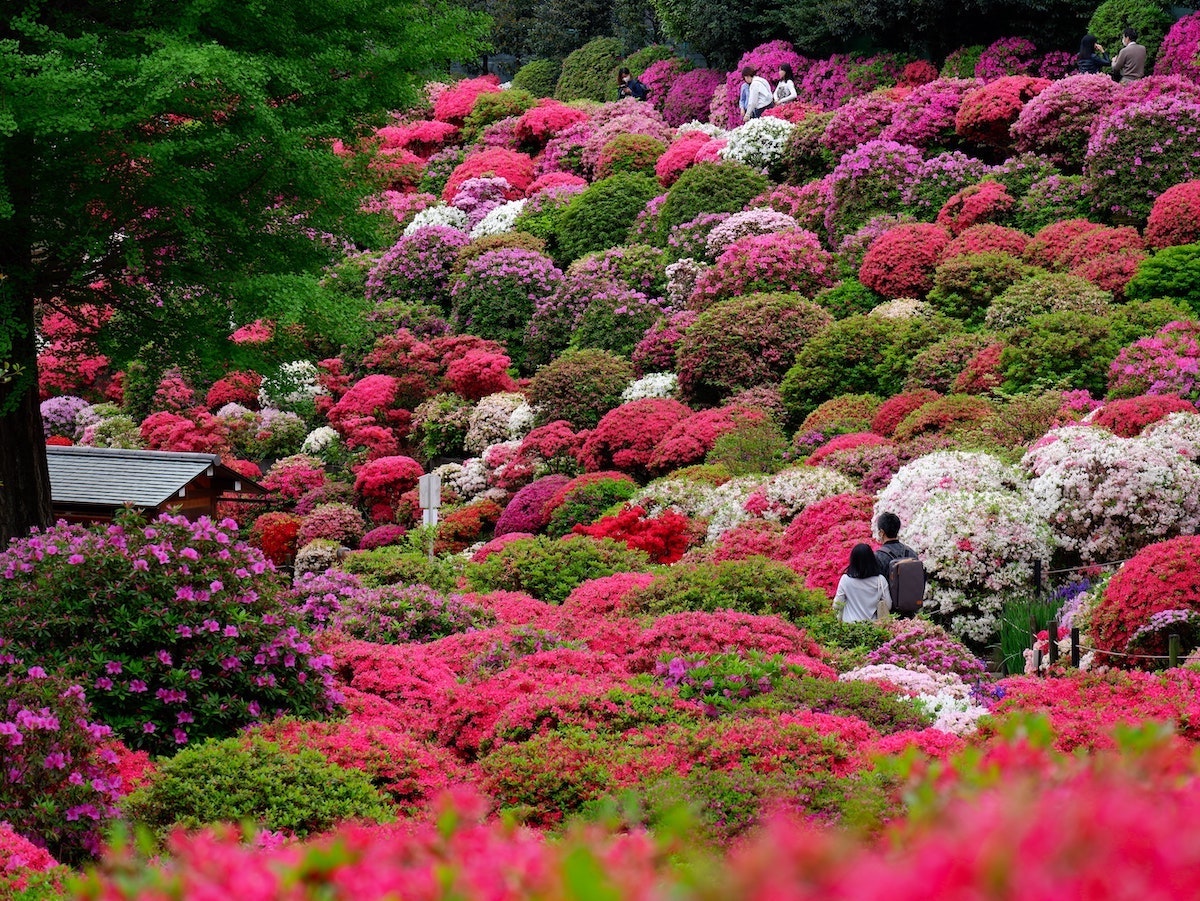
Chinese culture has long been infused with mystic, ethereal, and occult undercurrents. Chinese culture seems to be infused with flowers, which are frequently used as symbols of fortune and wealth.
Even treeflowers, such as plum blooms, have long been portrayed in Chinese poetry and art. Let’s explore the world of Chinese flowers and cultivate some of them for ourselves!
Table of Contents
1. Chinese Rose

The Chinese Rose, often referred to as China or Bengal rose, is a native of southwest China and the province of Hubei. It possesses the rare capacity to bloom continuously.
It is the “Queen of flowers” given to loving partners because of its beauty. It is given as a gift to honor accomplishments and birthdays and also represents good fortune.
- Rosa chinensis is its scientific name.
- in Chinese: Wishing you luck
- Red is a common color.
- Rosa semperflorens and “Spontanea” are two common varieties.
- The best growing zones are 7-9.
- Full sun is required for lighting
2. Camellia
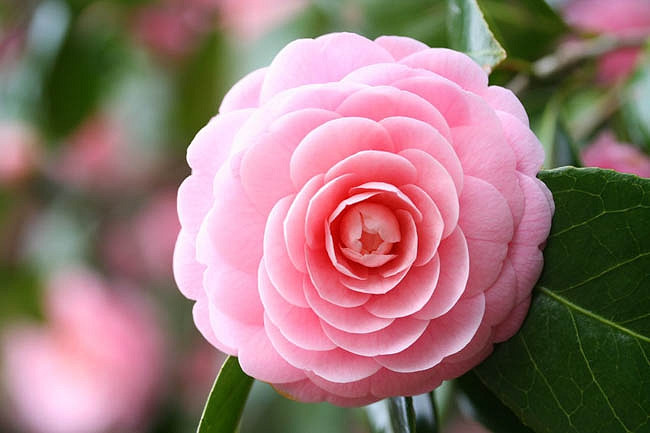
These substantial plants are regarded as the emblem of Southern China. The camellia is frequently used to make tea and essential oils, and in Chinese tradition, it stands for youthful “sons and daughters.”
The camellia is symbolic of passion, perfection, and faithfulness. Fun fact: Camellia oil is used to keep knives and blades sharp.
- Japanese camellia is its botanical name.
- “Young sons & daughters” in Chinese.
- Red, white, and pink are common colors.
- ‘April Tryst’, ‘April Rose’, and ‘Winter’s Rose’ are common varieties.
- Zone 6 is the best for growing.
- Demands for light: partial shade
3. Lotus
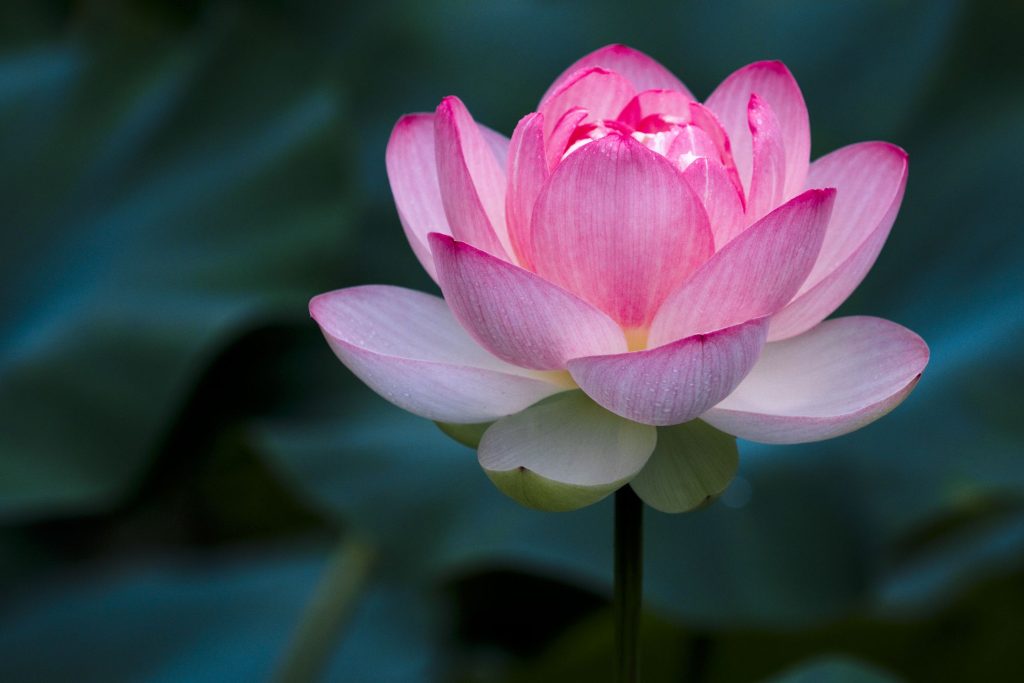
In Buddhism, the lotus has profound spiritual significance. Its connotations are innocence and purity. The lotus is considered to be a holy flower since many think it is where Buddha sits.
In Chinese medicine, the lotus flower is frequently used to treat gastrointestinal issues, fever, and coughing. Its delicate movements, which are easily grown in water features and ponds, stand for peace and beauty.
- Name of the plant: Nelumbo nucifera
- Purity, peace, and beauty are translated as in Chinese.
- Pink, white, yellow, purple, and blue are common colors.
- “Pink China,” “Sapphire Blue,” and “Beautiful Dancer” are popular varieties.
- Optimal Zones for Growing: 5–10
- Light Requirements: Direct sunlight for at least six hours
4. Orchid
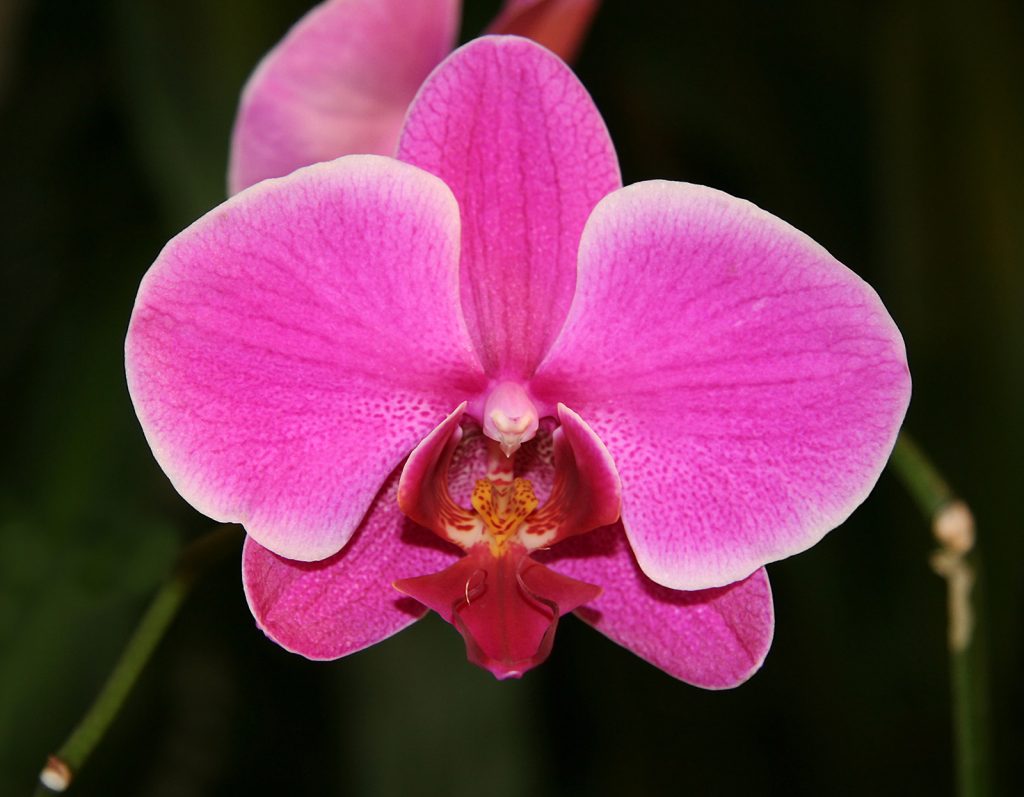
Although ground-growing orchids can be grown outside, most orchids are houseplants. The orchid is a symbol of love, riches, beauty, and the union of married couples in China.
These fabled plants are believed to have existed before the continents moved!
- Orchidaceae, a family of plants
- Meaning: Marriage, love, and wealth
- White, blue, purple, pink, and yellow are common colors.
- Popular varieties include Chinese ground orchid, lady slipper, and ladies tresses.
- Zone 8 is the best for growing.
- Light necessities: indirect lighting
5. Chrysanthemum
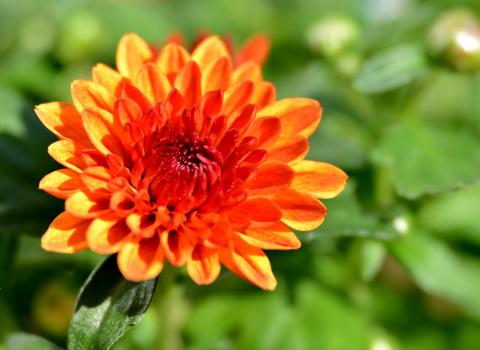
Chrysanthemum cultivation dates back hundreds of years in China. The flower is mentioned in ancient Chinese manuscripts dating back to the 15th century B.C.
It is said that chrysanthemum roots that have been boiled might relieve headaches. They stand for both autumn and the ninth lunar month.
Chrysanthemums are a symbol of longevity and long life in Chinese.
- Chrysanthemum is a plant.
- Honor, longevity, fortune, and energy are the connotations.
- Common Colors: Violet, yellow, white, and red
- Single blooms, spider blossoms, quilled blooms, and anemone are popular varieties.
- Best growing zones are 5 to 9.
- 6 hours each day of sunlight are required for light.
6. Hibiscus

The hibiscus, also called the Chinese hibiscus, is particularly well-liked in China.
Hibiscus blossoms are an ancient Chinese remedy that stimulates hunger, dispels summer heat, encourages urination, calms a dry cough, quenches the thirst, and heals diseases.
Even women’s black hair colour and black shoe polish are made from the petals.
- Name of the plant: hibiscus
- Meaning: Glory, riches, grandeur, fame
- Red, orange, yellow, pink, and multicolor are common colors.
- China rose, rock hibiscus, and rose mallow are common varieties.
- Zones 8–11 are the best for growing
- Full sunlight is required for lighting.
7. Magnolia

The magnolia has been selectively bred for centuries and is a favorite in China. In ancient times, the flower was extremely rare and valuable, and only Chinese emperors could afford it.
The medical benefits of magnolias include relief from asthma, migraines, indigestion, constipation, weight loss, sadness, and anxiety.
- Magnolia spp., botanical name
- Meaning: Wealth, honor, femininity, and purity
- White, pink, red-purple, and purple are common colors.
- Several common varieties include anise, bigleaf, and saucer magnolias.
- Optimal Zones for Growing: 7–10
- Sunlight or some shade is needed for lighting.
8. Iris

The iris is regarded as a summer spirit and messenger in China. It announces the advent of summer, and as the warm breeze blows, its petals soar and flutter like butterfly wings.
Because of this, it is renowned in China as the “Purple Butterfly.” Eating it is also said to extend life.
- Iris, the botanical name
- Meaning: Insight, communications, conviction, innocence, and fresh starts
- Blue, purple, red, orange, yellow, and white are common colors.
- Iris typhifolia, dwarf bearded iris, yellow flag iris, and bearded iris are common varieties.
- The best growing zones are 3–10.
- Full sun is required for lighting.
9. Peony

In China, the peony blossom has long been prized for its beauty. As China’s unofficial national flower, they are frequently referred to as the “king of flowers.”
They were sewed into the clothing of the Imperial family and frequently used as the bridal flower in ancient China. If you wore anything with peonies as a commoner, you might lose your head.
- Paeonia spp., the botanical name
- High regard, esteem, fortune, reputation, and wealth
- Common hues include red, pink, and white.
- Popular varieties include “Shirley Temple,” “Karl Rosenfield,” and “Sarah Bernardt.”
- The best growing zones are 3–8.
- Light requirements range from full sun to some shade.
10. Trichosanthes Kirilowi

The flowering plant trichosanthes kirilowii, also referred to as the Chinese snake gourd or Chinese cucumber, is native to Shandong, Henan, Shanxi, Hebei, and Shaanxi.
It is a fast-growing perennial climber and one of the 50 essential herbs used in traditional Chinese medicine.
- Name of the plant: Trichosanthes kirilowii
- Meaning: Recovery
- White is a common color.
- Popular varieties include snake gourd, pointed gourd, and indrayan.
- Zones 8–11 are the best for growing
- Full sunshine is required; no shadow is required.
11. Sunflower
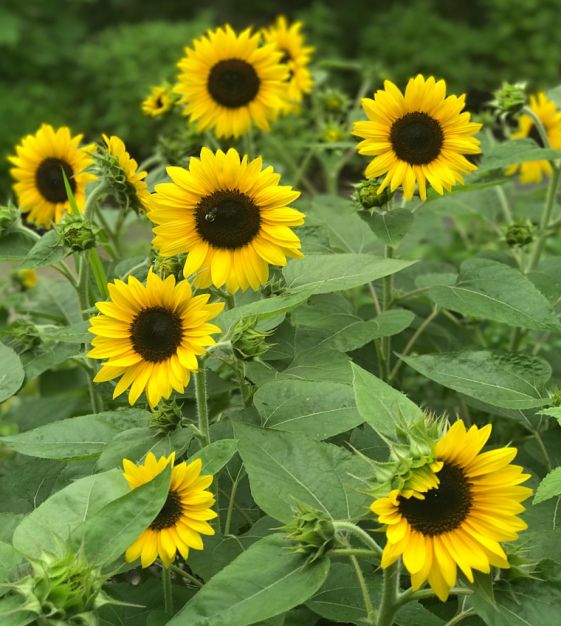
The sunflower has long been a symbol of luck and longevity in Chinese culture. It is lucky to present sunflowers at the beginning of a new business or at a graduation.
People in ancient China thought they possessed immortality-granting powers. Sunflower seeds were used as a snack by royalty to become immortal.
- Helianthus annuus is the botanical name for
- Meaning: Prosperity, longevity, joy, and vigor
- Yellow, golden yellow, ruby red, bronze, and white are common colors.
- Popular varieties include “Elf,” “Soraya,” “Little Becka,” and “American Giant.”
- The best growing zones are 4–9.
- Light Requirements: 6 to 8 hours per day of direct sunlight
12. Azalea

The azalea, an East Asian native, is a key ornamental flower in traditional Chinese gardens, and there are innumerable hybrids available with various levels of attractiveness.
The Tang Dynasty poets who were frequently lonely made the flower renowned by expressing melancholy whenever they saw an azalea because they missed their loved ones.
- Rhododendron species is the botanical name.
- Meaning: Femininity, restraint, ardor, and fragility
- Red, yellow, pink, orange, and white are common colors.
- Popular varieties include “Lemon Lights,” “Northern Hi-Lights,” and “Encore Autumn Amethyst.”
- Optimal Zones for Growing: 6–9.
- Requires full sun or some shade for lighting
13. Narcissus

The Narcissus genus, often known as the daffodil and including jonquils, has numerous names in Chinese culture. It is highly regarded for bringing good tidings and represents good fortune.
With several legends surrounding the flower, including those involving the water deity of the Xiang River, it serves as the symbol of the Chinese New Year. It is the most well-liked flower in the province of Fujian in eastern China.
- Name of the plant: Narcissus
- Meaning: Rebirth, prosperity, good luck, and prosperity.
- Common Colors: Golden tangerine or white
- Popular varieties include Narcissus tazetta, Narcissus tazetta, and Paperwhite.
- Zones 8–11 are the best for growing
- Requires full sun or some shade for lighting
14. Osmanthus

It represents passion and love in conventional Chinese culture. The Osmanthus has been cultivated in China for thousands of years and is used to make tea with a floral aroma.
Numerous Osmanthus trees may be found in Guilin, a well-known city with a landscape that many consider to be the best on earth.
- Osmanthus fragrans is its botanical name
- Love, fertility, loyalty, nobility, and prosperity
- Common Colors: Orange-yellow, pale yellow, white, and yellow
- “Fundingzhu,” “Orange Supreme,” “Apricot Gold,” and “Butter Yellow” are popular varieties.
- Best growing zones are 9 to 11.
- Light requirements range from full sun to some shade.
15. Rhododendron

The rhododendron, sometimes known as the “Venus of flowers,” is one of the most well-known flowers in China.
It has long been appreciated by Chinese poets and intellectuals, and some have said that it is so beautiful that it makes all other flowers look insignificant in comparison.
Rhododendrons differ from azaleas in that they bloom at different times, have different flowers, stamens, colors, and foliage.
- Rhododendron species is the botanical name.
- Meaning: Excellence, charm, dedication, and innocence
- Common Colors: Red, white, orchid pink, purple, and white
- Champion’s, Westlands, Hong Kong, and Mrs. Farrer’s are popular varieties.
- Optimal Zones for Growing: 8–10
- Lighting needs: partial to complete shade
16. Gardenia

The gardenia is a symbol of November and of feminine beauty and sturdiness in Chinese tradition and culture.
Gardenia flowers were traditionally used by Chinese ladies to adorn their hair and to make incense and cosmetics with their aroma. Yellow dye was produced from the flower’s seeds.
- Gardenia species is the botanical name.
- Meaning: Clarity, faith, hope, rejuvenation, and beauty.
- The usual hues are white, yellow, red, and pink.
- Four Seasons, Golden Magic, August Beauty, and Belmont are popular varieties.
- Zones 8–11 are the best for growing
- Bright indirect sunlight or some shadow is needed for lighting.
17. Jasmine

In Fuzhou, the biggest city in China’s Fujian province, jasmine was planted as early as the Western Han Dynasty (206BC-9AD).
Jasmine is one of the Buddhist religion’s holies flowers and represents eternal love in Chinese culture. The scent of jasmine is revered as the aroma of heaven and is frequently referred to as the “Queen of the Night.”
- Jasminum spp., botanical name
- Meaning: Sensuality, love, and beauty
- White, yellow, and bicolor blooms are common colors.
- Royal jasmine, winter jasmine, and dwarf jasmine are popular varieties.
- Optimal Zones for Growing: 8–10
- Light Requirements: Part shade to full sun
18. Lilies

Lilies are a symbol of pleasure and wealth in Chinese culture. They are frequently given as gifts to women for their birthdays or weddings.
Sons were valued in old Chinese culture, and lilies were thought to bring them. The flower, which is common at weddings, also stands for 100 years of love in China.
- Lillium is a plant.
- Meaning: Love, joy, fortune, and purity
- White, pink, yellow, red, and orange are common colors.
- Oriental lilies, Asiatic lilies, trumpet lilies, and other common varieties
- The best growing zones are 4–9.
- Full sun, half sun, or light shadow are all acceptable forms of lighting.
19. Aster

The unusual daisy-like Aster is distinguished by its star-shaped bloom head. In China, they have been grown for at least 2,000 years.
Asters were used to treat indigestion, hangovers, coughs, and lung inadequacies in traditional Chinese medicine and tea.
They are composite flowers, with lengthy petals encircling a center core made of several tiny blooms.
- Botanical family known as asteraceae
- Wisdom, love, and trust
- The usual hues include white, purple, red, and pink.
- Popular varieties include “Gremlin Double,” “Fireworks,” “Crego Giant,” and “Gala.”
- Optimal Zones for Growing: 2–11
- Light requirements range from full sun to some shade.
20. Wintersweet

Because it only blooms in the bleak winter, wintersweet is referred to be the flower of December in China.
The bowl-shaped flowers are undeterred of the cold or snow and typically bloom from November to March.
- Name of the plant: Chimonanthus praecox
- Meaning: Unflappable, strong, and unwavering
- Bright yellow, gold, purple, red, and white are common colors.
- Popular varieties include “Grandiflorus” and “Luteus.”
- The best growing zones are 7-9.
- Light requirements range from full sun to some shade.
21. Balsamine

Balsamine, often referred to as the July flower in China, may easily reach heights of 30 inches, but in the wild, it can get even higher.
Different sections have therapeutic benefits, and traditional Chinese medicine uses them for treating skin conditions and illnesses.
It’s thought to be an incarnation of the phoenix, one of the strongest and most gorgeous mythological creatures in Chinese mythology.
- Impatiens balsamum, the botanical name
- Meaning: Vitality, attractiveness, and beauty
- Common Colors: White, Red, Pink, and Purple
- Popular varieties include spotted snapweed, rose balsam, and garden balsam.
- Optimal Zones for Growing: 2–11
- Requires full sun or some shade for lighting
22. Water Lilies

Since more than 3,000 years ago, water lilies have been grown as an attractive plant in China under the name “sleeping lotus.”
The flower was originally a star that fell from the sky and transformed into a water lily, according to tradition.
They represent resurrection in Chinese and Buddhist traditions since the blossoms close at night and open at first light in the morning.
- Nymphaeaceae, Nymphaeaceae
- Meaning: Regeneration, purity, and heavenly birth
- White, yellow, pink, red, and pastel orange are common colors.
- Popular cultivars include “Pale Moon,” “Morning Mist,” and “Maroon Pink.”
- The best growing zones are 4-11 and 9-11 (tropical) (hardy)
- Minimum 6 hours of direct sunshine are required for lighting.
23. Chinese Sacred Lily

Due to its beauty and scent, the Chinese sacred lily, which has been grown in China for over a thousand years, is one of the top ten most famous flowers.
For many Chinese families, sacred lily bulbs are a must during the Chinese Spring Festival.
- Name of the plant: Narcissus tazetta
- Meaning: Plenty, chastity, grace, and good luck
- Common hues are white and tangerine-gold.
- Popular cultivars include the bunch-flowered and polyanthus daffodils.
- Optimal Zones for Growing: 1–10
- Requires full sun or some shade for lighting
24. Ranunculus

Around 78 species and nine variants of Ranunculus flowers, commonly referred to as buttercups, are found throughout China.
They have historically been employed in folk medicine and represent high flexibility. They were utilized in ancient times for divination to impart wisdom and strengthen spiritual ties.
- Ranunculus species is the botanical name.
- Meaning: Beauty, charm, tenacity, and divinity
- White, pink, red, yellow, and purple are common colors.
- Persian buttercup, meadow buttercup, and hairy buttercup are common varieties.
- Optimal Zones for Growing: 8–10
- Full sun is required for lighting
25.

Before the tulip fever of the 17th century, when they were an exotic luxury and collector’s item, tulips initially bloomed profusely in the Tian Shan mountains.
Since ancient times, they have attracted people and have been seen as a sign of new beginnings and a proclamation of love.
- Name of the plant: tulip
- Meaning: Fortune, wealth, love, and rebirth
- White, red, pink, yellow, and purple are common colors.
- Triumph tulips, Darwin tulips, and fringed tulips are popular varieties.
- The best growing zones are 3–8.
- Full sun is required for lighting
26. Chinese Carnation

China pink is a common name for Chinese carnations. Its stunning hues make it the ideal material for lining garden boxes, flower beds, and boundaries.
It can be sown as early as February, and once it’s established, it doesn’t need any upkeep. It is a native of China and has a lengthy flowering season that lasts from March and April to October.
- Dianthus chinensis is its scientific name.
- Meaning: Interest, affection, and thankfulness
- Common Colors: White, blended with red, and occasionally pink or purple.
- Popular Colors: “Diamond Blush Pink,” “Floral Lace Crimson”
- Optimal Zones for Growing: 6–9.
- Requires full sun or some shade for lighting
